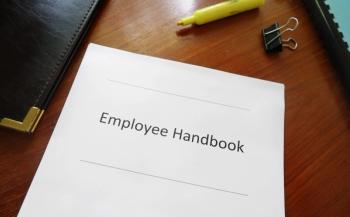
Tardy Staff
Our staff members sometimes arrive late. How do we set a policy regarding what is excessive lateness, and what we will allow? In other words, how do we control tardiness?
Question: Our staff members sometimes arrive late. How do we set a policy regarding what is excessive lateness, and what we will allow? In other words, how do we control tardiness?
Answer: According to our HR expert, Bob Vidal of Employer Services Group in Denver, large organizations, like manufacturing companies, that need a more accurate way to keep track of time will use time clocks. Time clocks are a great way to track time and a great way to document tardiness.
For the rest of us, tardiness becomes more of a judgment call. Documentation may be more difficult. This may become a problem when an employee you fire for chronic lateness claims that everyone else is just as tardy - that you used tardiness as pretext to cover your age/racial/gender discrimination against him.
Develop a tardiness policy that suits your business. Many policies allow an employee up to three late starts per month before a verbal or written warning is issued. Once the warning is issued, the employee may only be late three times during a three-month period. If the tardiness continues, the employer terminates the employee.
Here are a few tips:
• Make sure everyone understands the rules.
• Apply the rules consistently.
• When developing a policy, try to avoid creating a "due process" for discipline and termination. Otherwise you may jeopardize your "employment-at-will" status. Every situation is different, so you want to establish general guidelines to manage these differences. For example, a very good, long-tenured employee may begin to have problems with tardiness and absenteeism because of personal problems. You may want to treat that employee differently from a new employee who is displaying the same pattern of absenteeism.
• If you give an employee a warning with a specific timeline, it does not mean that you have to wait until the end of the warning period before you can take further disciplinary action or terminate the employment if they continue to be tardy shortly after the warning has been issued.
• Treat absenteeism, as well as other disciplinary action, as cumulative. You may have experienced a situation in which an employee receives a warning and corrects the behavior for the duration of that warning period. Once they have cleared the timeline, they go back to their old behavior. If they return to the behavior, this is a great time to take further disciplinary action or terminate the employment.
• Keep good records. You will need to support your termination decision against an unemployment case, or a wrongful termination case.
Newsletter
Optimize your practice with the Physicians Practice newsletter, offering management pearls, leadership tips, and business strategies tailored for practice administrators and physicians of any specialty.









